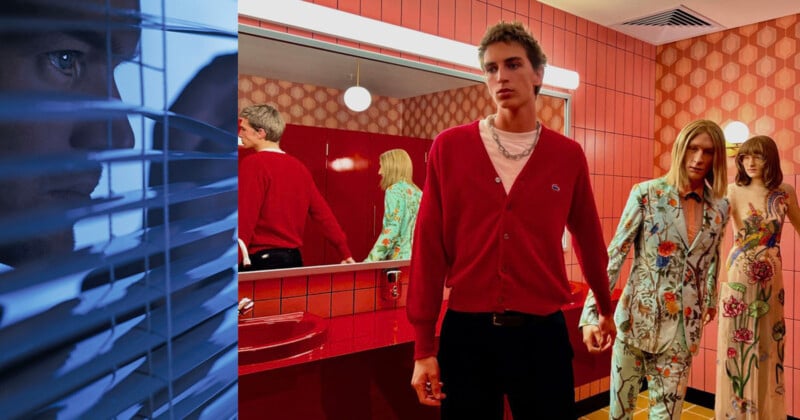Photographers are Turning on Each Other in Their AI Paranoia

The great photographer panic over artificial intelligence (AI) has been underway for some time, but it reached new heights this week when a photo competition disqualified a genuine photo after the judges became suspicious that iPhone photographer Suzi Dougherty was trying to trick them.
Last night, the owner of Charing Cross Photo apologized “unreservedly” to Dougherty, who is a bemused mother caught in the middle of this drama who is actually an actor rather than a photographer.
Photo judge Iain Anderson initially made ham-fisted comments about Dougherty’s photo, declaring it to be fake. “We want the images to come from your real-life experience, and not sourced from cyberspace,” he said.
After a huge backlash, Anderson has now been more contrite and realized the “momentous villainous” failure on his part.
Anderson, who says he started the photo competition to encourage creativity and artistry, has printed and framed Dougherty’s photo, displaying it in the shop’s window with a 500 Australian dollar ($344) price tag promising the money will go to her and a charity of her choice.
“I want to thank Suzi again and finally thanks for her graciousness and forgiveness in this matter,” adds Anderson.
The Paranoia is Real
Let’s back up here: Charing Cross Photo is a photo lab in a suburb of Sydney offering passport photos, photography workshops, film processing, picture framing, and other photo-related services.
It seems like a fairly small community-led store, I can’t imagine there are too many other similar businesses in the Sydney area.
Clearly, shop owner Iain Anderson is not fully clued up about AI image models as a well informed glance at Dougherty’s photo would reveal it’s obviously not AI. The hands are perfect, for one, and I don’t recall ever seeing an AI image nailing a mirror reflection like Dougherty’s.
![]()
But there is an uncanny feel to the photo, embellished by the haute couture mannequins. At first glance, the viewer might think there is more than one human in the photo — perhaps this is what spooked Anderson.
While he may not have spent hours looking at and studying AI images the way I and countless others have, he has heard about AI as just about every photographer in the world has. It has become a boogeyman — a sinister threat. Dark clouds grow over the industry as photographers nervously wonder what these new players in the imaging world are going to do next.
The paranoia has gotten so bad that it has caused Anderson to turn on one of his clients.
Dougherty is not the first real photographer to be accused of generating work with AI, nor will she be the last. I’ve seen countless comments online underneath brilliant, authentic photos that read: “That’s AI” or “I could just get AI to do that.”
That latent diffusion models can now generate images indistinguishable from a photo in many peoples’ eyes is, understandably, of grave concern to photographers. We’re in unchartered territory.
It gets worse when you think about how these models were built. Every photographer who has ever posted a photo online has had their work used in a way they did not consent to. Companies like Midjourney, LAION, OpenAI, and Stability AI have done an almighty scrape of all the images on the internet to build their models, feeding their machines with the blood, sweat, and tears of photographers’ hard work. Don’t believe me? Check for yourself.
The poet Delmore Schwartz is credited with the phrase: “Even paranoids have enemies.” He wasn’t wrong.
This story is part of PetaPixel’s weekly newsletter Clipped Highlights.
What is Clipped Highlights?
Clipped Highlights is a free, curated, weekly newsletter that will be sent out every Wednesday morning and will focus on a few of the most important stories of the previous week and explain why they deserve your attention. This newsletter is different from our daily news brief in that it provides unique insights that can only be found in Clipped Highlights.
In addition to unique takes on the biggest stories in photography, art, and technology, Clipped Highlights will also serve to feature at least one photo series or art project that we think is worth your time to check out. So often in the technology and imaging space we focus on the how and not the what. We think that it’s just as important, if not more so, to look at the art created by photographers around the world as it is to celebrate the new technologies that makes that artwork possible.
If this kind of content sounds like something you’re interested in, we encourage you to subscribe to the free Clipped Highlights newsletter today. You can read this week’s edition right here, no subscription necessary, to make sure it’s something you want in your inbox.
We’ll also make sure to share each edition of Clipped Highlights here on PetaPixel so if you aren’t a fan of email, you won’t be forced to miss out on the weekly newsletter.
Image credits: Suzi Dougherty. Header photo partly licensed via Depositphotos.